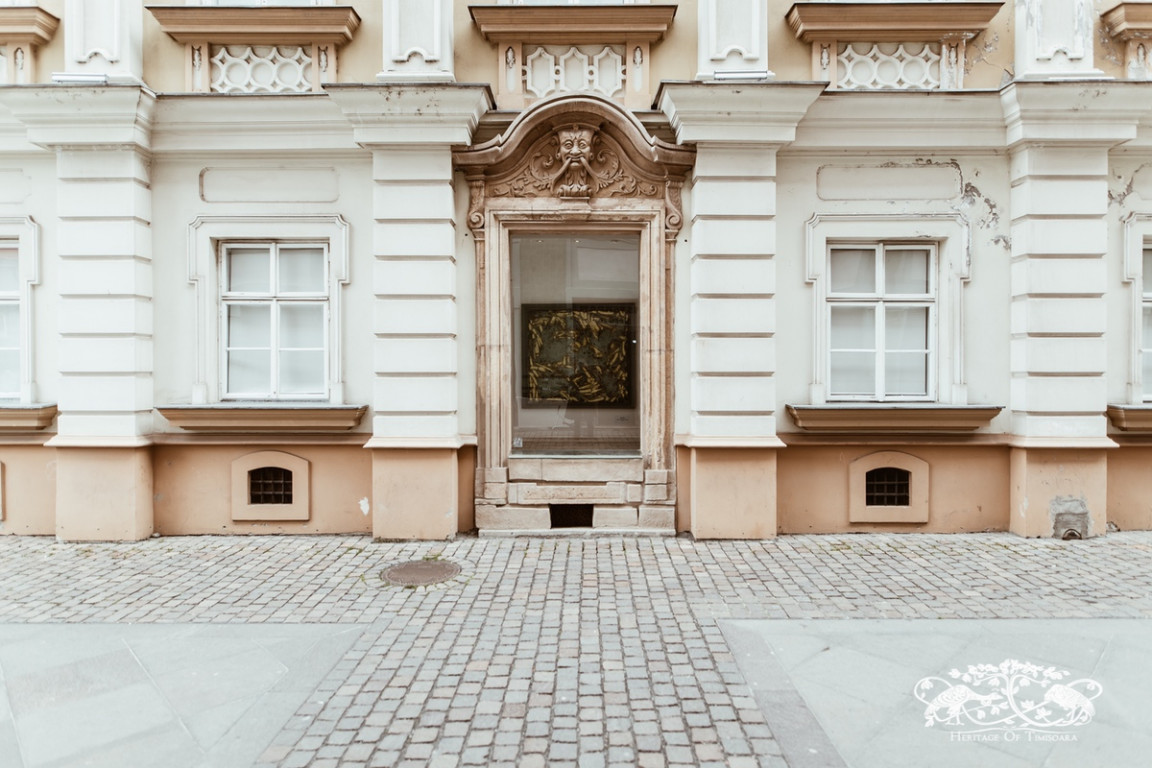The current circumstances caused by the coronavirus pandemic compel us to actions of social distancing, to redefining the methodology of the Heritage of Timișoara project, as well as to general measures of adaptation at the level of the entire Prin Banat Association. This moment, an occasion for introspection and rest, coincides with the arrival of spring, but in a way that is in antithesis with the usual approach.
Among the multitude of news that reach us are also the ones about climate, the forced pausing of everyday life bringing a moment of rest to the planet, an occasion that facilitates the reintegration of nature in urban life.
Așadar, profităm de timpul liber nesolicitat pentru a relata povestea Omului Verde, un mascaron în directă legătură atât cu tema relației dintre natură și om, cât și a primăverii, și pe care-l regăsim frecvent și pe We therefore take advantage of this moment to tell you the story of The Green Man, a mascaron we frequently find on the facades of the building in Timișoara, one that is connected both to the relationship between man and nature, as well as to spring.
I. Prologue. On The Green Man
A symbol frequently used in Antiquity in both European and Asian cultures, The Green Man represents the interdependent relationship between man and nature. Associated with the rebirth of nature and, implicitly, with the arrival of spring, The Green Man is a symbol of regeneration and fertility.
Because of its archetypal quality, the motif transcends the world of Antiquity and is adopted as a decorative motif by the Christian cult, probably via the cult of Dionysus. If, during the medieval period, the motif was used mainly in decorating ecclesiastic architecture, starting with the Italian Renascence, The Green Man is used more and more often in secular arts. Its use gains popularity in the 16th and 17th centuries especially in the Anglo-Saxon space, thanks to the cultural underlayers of the Celtic cult.
In the German space, the mascaron is adopted for its plastic expressiveness with little regard for its symbolic underlayers, and it is integrated among the forms of the Baroque, by means of which it arrives in Timișoara.
The Geen Man almost completely disappears in the Neoclassical and Eclectic periods, but, as a reaction to Industrial Revolution and man’s moving away from nature, in the second half of the 19th century, but especially in the new art of the 1900s, the motif re-emerges in the new architectural vocabulary. The style of the 1900s puts forth a quest for new styles and a renouncing of classical language. Some of these quests turn to the medieval period, others find inspiration in nature, but both directions converge in the motif of The Green Man.
The effects of this new movement also have an influence on the city of Timișoara. The moment coincides with a period of intense construction caused, on the one hand, by the economic propserity that the city undergoes at the end of the 19th century and the beginning of the 20th century (especially due to the industrial sector), and on the other hand by the availability of building space caused by the demolition of the city’s old fortifications. Consequentially, the city is enriched by a great number of buildings in the new styles, Secession and Art Nouveau, many of which integrate the motif of The Green Man.
II. The Green Man Makes His First Appearances In The City of Timisoara
We don’t know for sure the moment when The Green Man first appeared as a decorative element in the landscape of the city, but two portals surviving from the 18th century display the mascaron under discussion.
The oldest known representation of the motif of The Green Man is on the stone portal on the side façade of the Palace of the Old Prefecture (The Baroque Palace, currently The Museum of Art), an element dating back to the first half of the 18th century, probably between 1734 and 1750. The building was initially part of the Mining Offices and went through numerous changes and adaptations before reaching the configuration it has today. The portal with the aforementioned mascaron was integrated in the new configuration.
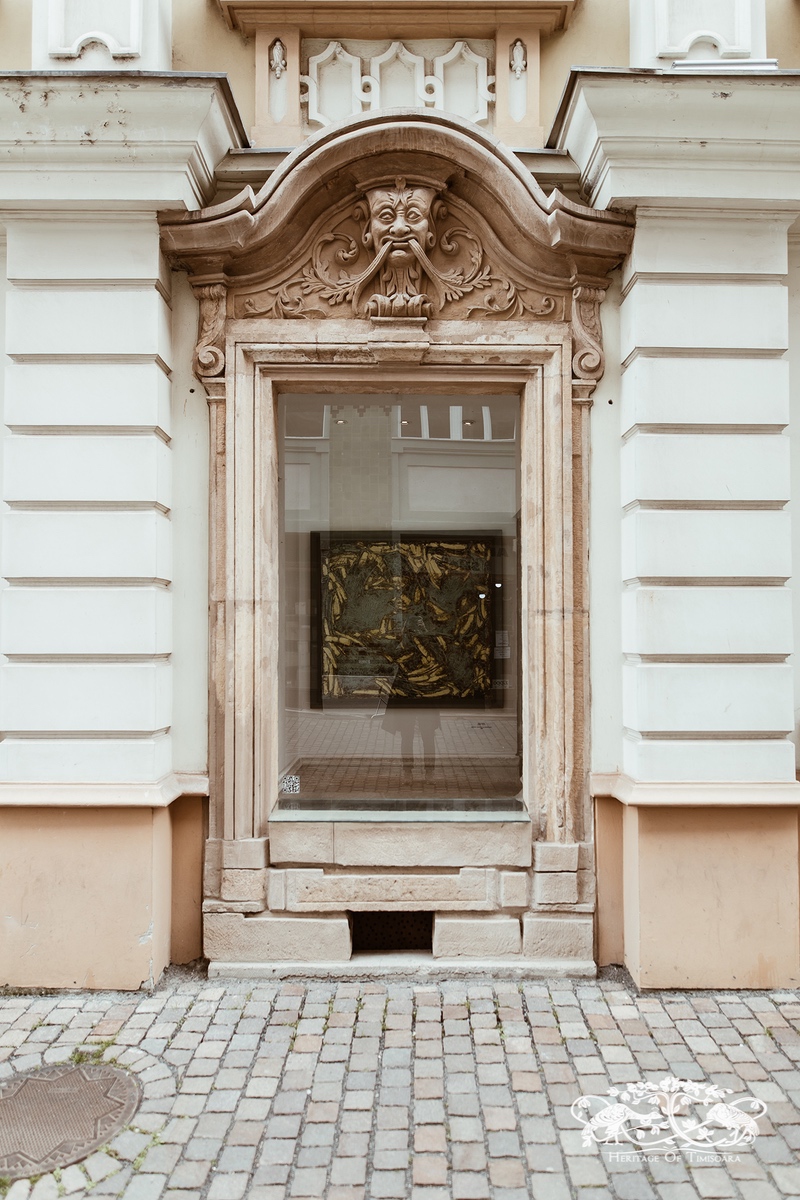
In this first case, we are dealing with a “germinating” representation of the motif, as the mouth of the mascaron is the starting, generative point for the stems and leaves that decorate in a symmetrical manner the lintel. The decoration displays the archetypal features of the motif, both in the stalks coming out of the character’s mouth, and in its vegetal transfiguration, as both his forehead and neck show vegetal forms.
The second example dating from the 18th century is on the portal of the Palace of the Roman-Catholic Bishop, where we find the motif in its “leafy” version. Located on the keystone in the apex of the arch, the mascaron presents subtle vegetal transfigurations at the level of its cheeks and forehead. It is worth noting also the crown of leaves and the garlands of flowers and fruits that decorate in a symmetrical manner the top part of the portal.
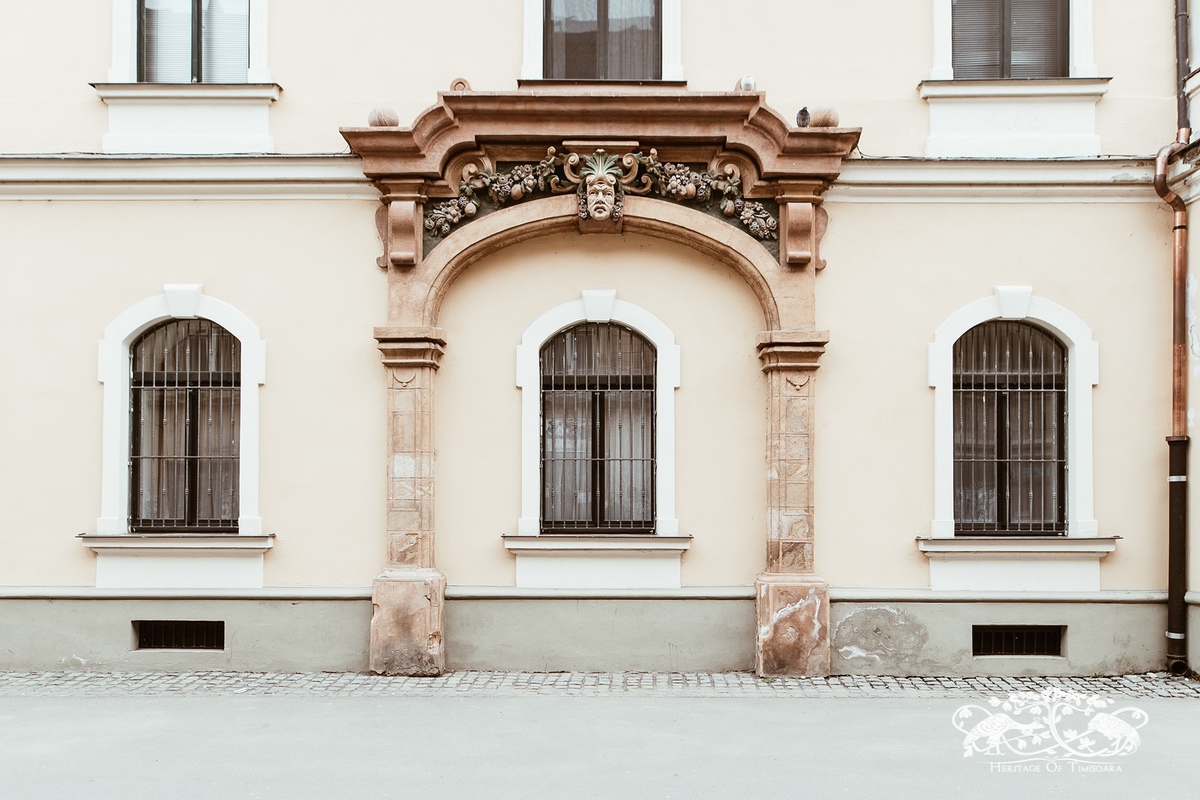
III. The Re-Emergence Of The Motif At The End Of The 19th Century
Besides the two examples mentioned earlier, specialised literature does not mention any other 18th century representations of the motif. Even if other such sculptures existed, they did not make it into present, as they probably fell victim to the numerous waves of aesthetic recalibration typical of the 19th century.
A changed in aesthetics was also responsible for the return of The Green Man in the landscape of the city. The second half of the 19th century, especially the 1880s, gave way to a series of transformations in the facades of the buildings in the fortified area of the city, changing both the decorative language used and the function of buildings.
Unlike the previous period with its Baroque representations of the motif, the element now had an inferior plastic value and a lesser role in the hierarchic composition of the façade. If in the 18th century the representations of The Green Man were placed in compositionally important spots (the keystone, the access portal), in the case of 19th century decoration, the element was assigned a secondary role. Reduced in size and simplified in terms of plastic expression, we find it on the building at V. Alecsandri Street no 4 on a decorative panel situated at the top of the windows from the first floor. Combining the “germinative” and “leafy” types, the element generates floral garlands that decorate the entire panel.
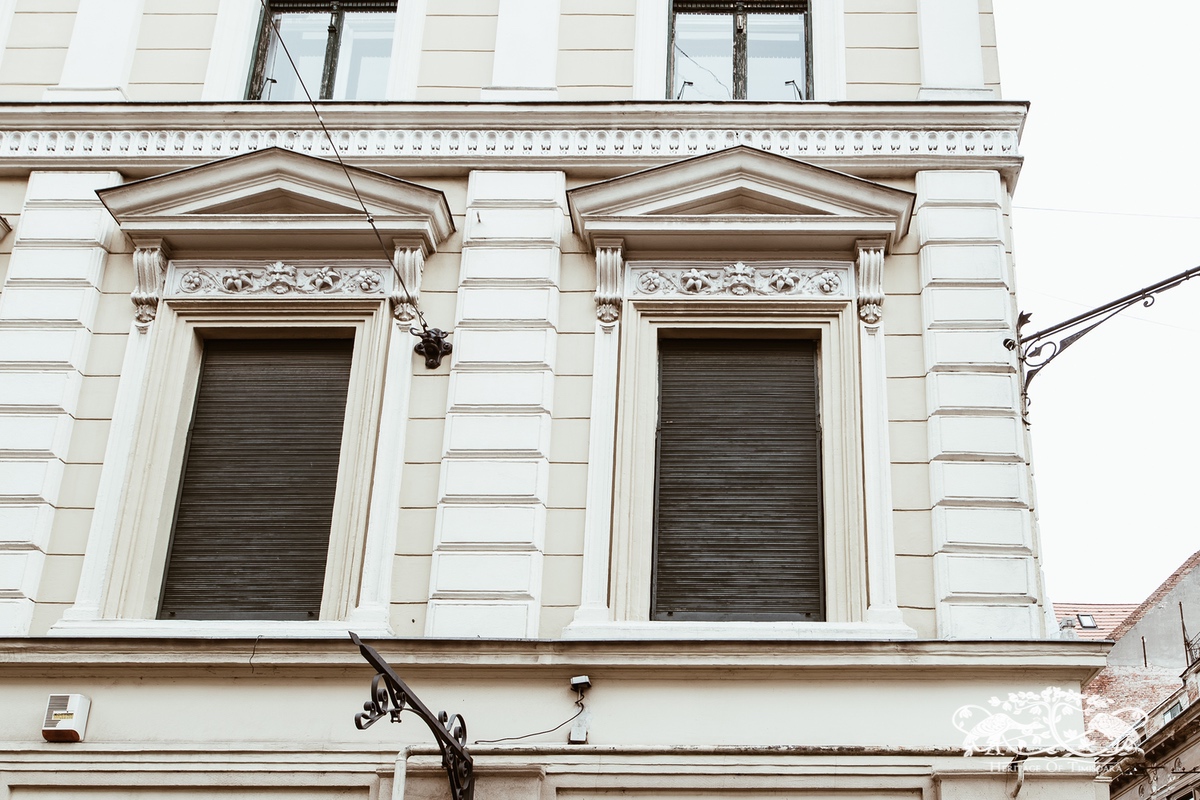
Another 19th century representation of the motif can be found on the façade of Dr. Menczer Rezső House, built between 1894-1895 according to the plans of the architect Karl Hart. Similarly to the example from the Fortification neighbourhood, here too we encounter a mixed representation subordinated to the general plastic of the edifice. The motif is again a purely visual one, devoid of any symbolic meaning. Located under the sill of the windows on the second floor, small and integrated in an Eclectic composition with Neo-Baroque aspirations, the mascarons become secondary details.
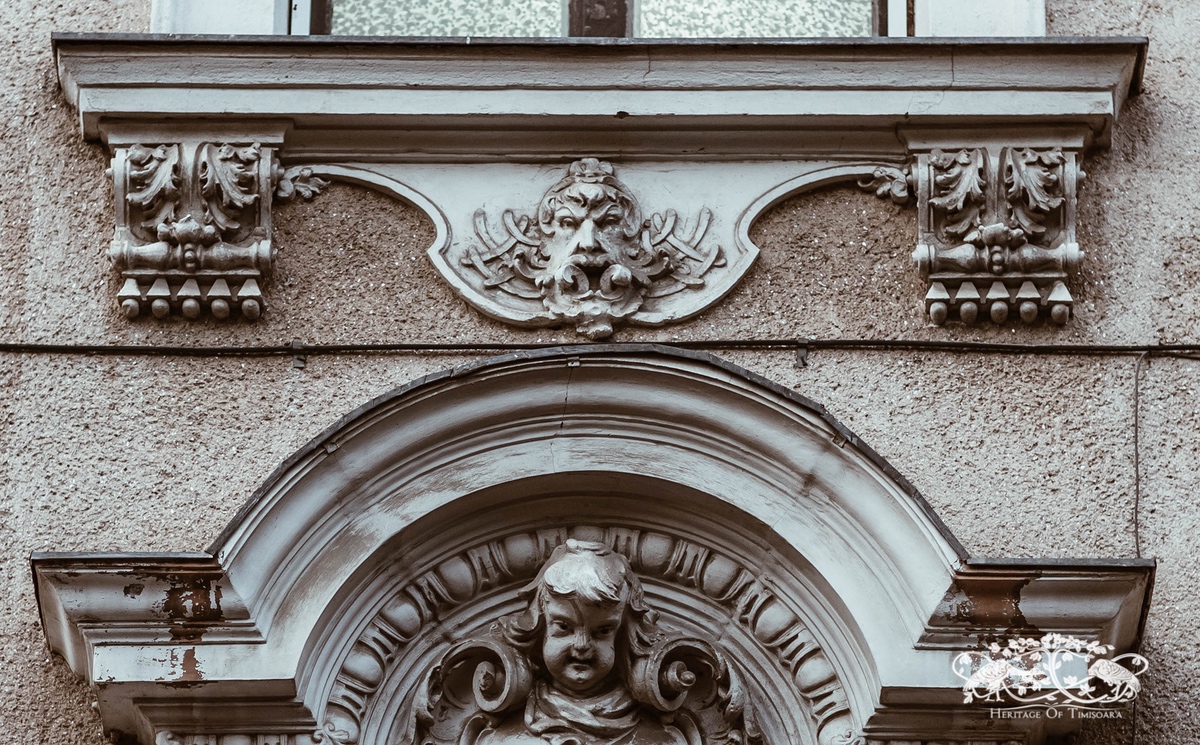
It is worth keeping in mind that both examples from the 18th have been through ample restoration processes (The Old Prefecture Palace – 1885-1886, The Palace of the Roman Catholic Bishop - 1889) at the same time as the re-emergence of The Green Man motif in the decorative plastic of the city. We assume this is not merely a coincidence, but rather that the restoration processes caused the motif to be rediscovered and reintroduced. Another hypothesis, less likely, assumes that the Baroque 18th century portals were adapted and the mascarons on them changed to fit the motif of The Green Man.
IV. The 1900s
The third episode of The Green Man’s presence in Timișoara takes place at the turn of the century. The 1900s bring profound changes on a global sale and on multiple levels. The city at the time was fully connected to the social and cultural life of Europe, so the new social, cultural and philosophical turmoil finds manifestations at a local level too.
Architecturally, the apparition of the new 1900s style takes place via two channels: on the one hand through the foreign architects who design a series of monumental buildings in the city (Lipót Baumhorn, Tőry Emil, Ernő Foerk etc.) and on the other hand though local architects who train at the great architecture schools in the Austro-Hungarian Empire.
The novelty of this phase consists in putting back together the two halves of the binomial shape-symbol. The 1900s architecture meant understood The Green Man motif and used it symbolically. In Timișoara we encounter two manifestations of the new style: the floral period characterized by sinuous lines and an abundance of floral and vegetal motifs (1900-1908), and the geometric period that manifested itself up to the First World War (1909-1914). In line with the principles of the new style and respecting the differences between the two phases, The Green Man motif becomes an important element of architectural vocabulary, moving away from its anterior minor appearances on facades and being integrated in a holistic conception of the building.
One of the first such apparitions is on The Palace of Waters. In a composition frequently used by the architect Lipót Baumhorn, the representation of The Green Man is set in a privileged position on the façade, on the main pediment over the semi-circular window. Belonging to the “leafy” type, the ornament is part of an elaborate composition alongside Secession garlands and historicist elements. On the level of the building, the element is in dialogue with other zoomorphic elements of marine inspiration.

The building opposite The Palace of Waters, Franz Marschall Apartment Building, is one of the most representative constructions from the first phase of the 1900s architecture (the two forming the “entrance gate” into Iosefin and Elisabetin neighbourhoods). Built by the local architect Martin Gemeinhart, the building stands out for the decoration of its façade, rich in vegetal and zoomorphic elements. Among these, we encounter the “leafy” motif of The Green Man in complex representations subordinated to the general composition of the façade.

Close to the two buildings mentioned above, in the north-eastern corner of Plevnei Square (a well-known “reservation” of Art Nouveau architecture), we encounter again The Green Man motif at the entrance of Fogl Ernő House. Here, the motif is present in sculpted form on the wooden door, as well as in the form of mascarons situated at the top of the pilasters flanking the door. Both representations represent the “leafy” type, with beards made of leaves. On a symbolic level, apart from its inherent characteristics, the motif takes on an additional protective role, guarding the access and all the spaces of the building.
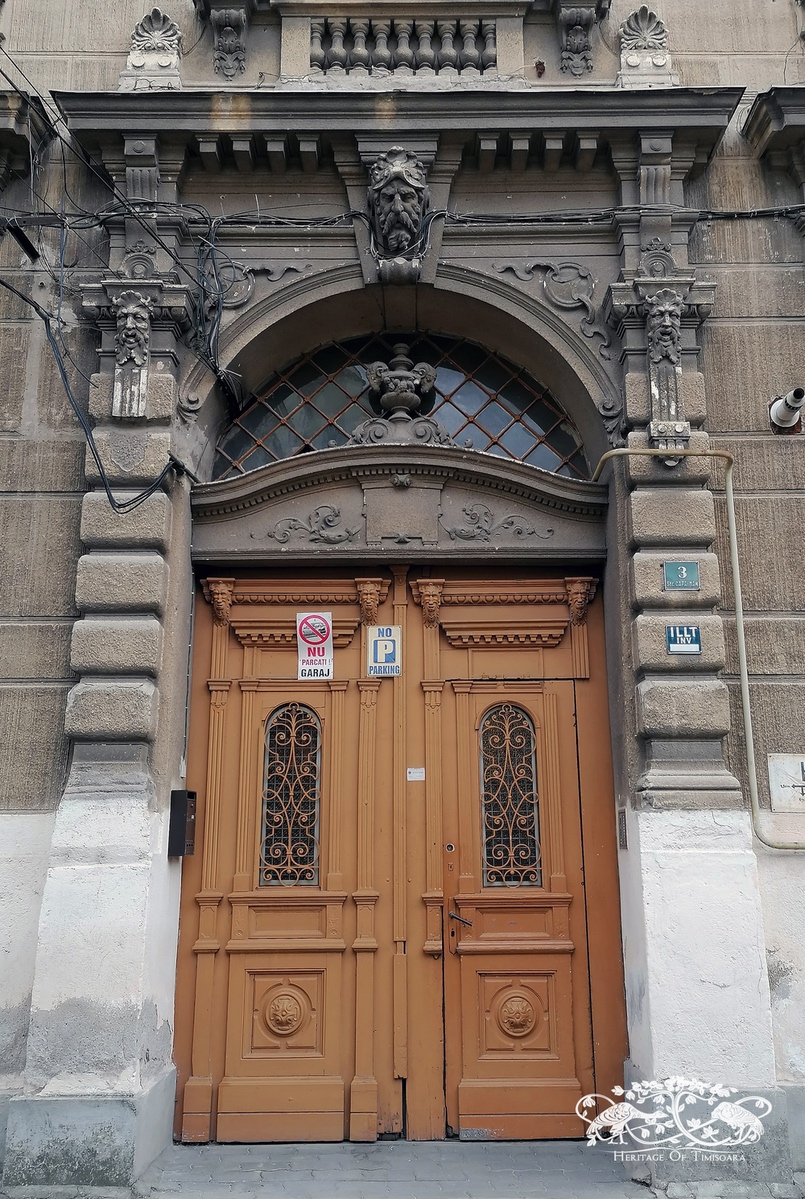
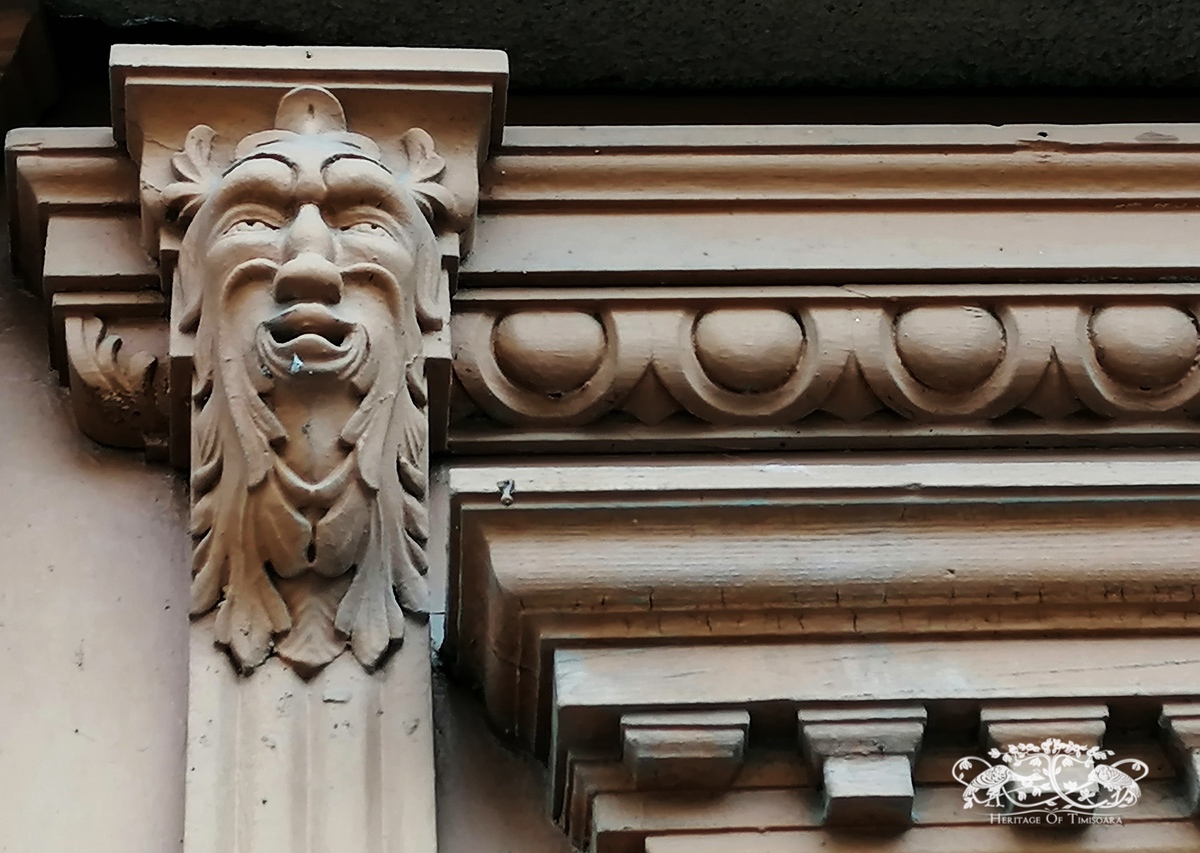
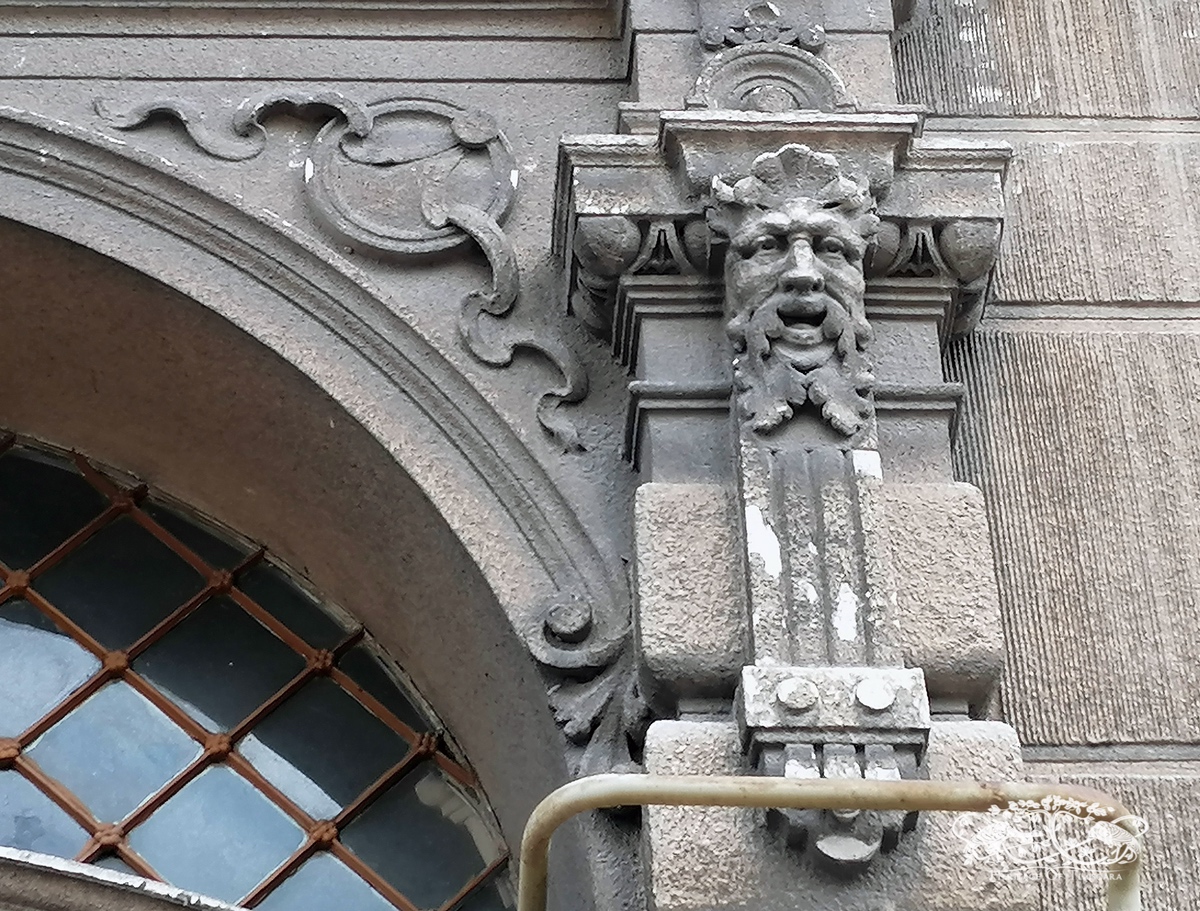
The motif can also be found on the facades of Bela Fiatska Apartment Buildings in Alexandru Mocioni Square, in small medallions located above the windows of the second floor. In this case The Green Man motif is integrated in a vaster picture, alongside representations of the tree of life at the top of the pilasters, and the decorated panel of the attic, ornamented with floral and vegetal motifs.
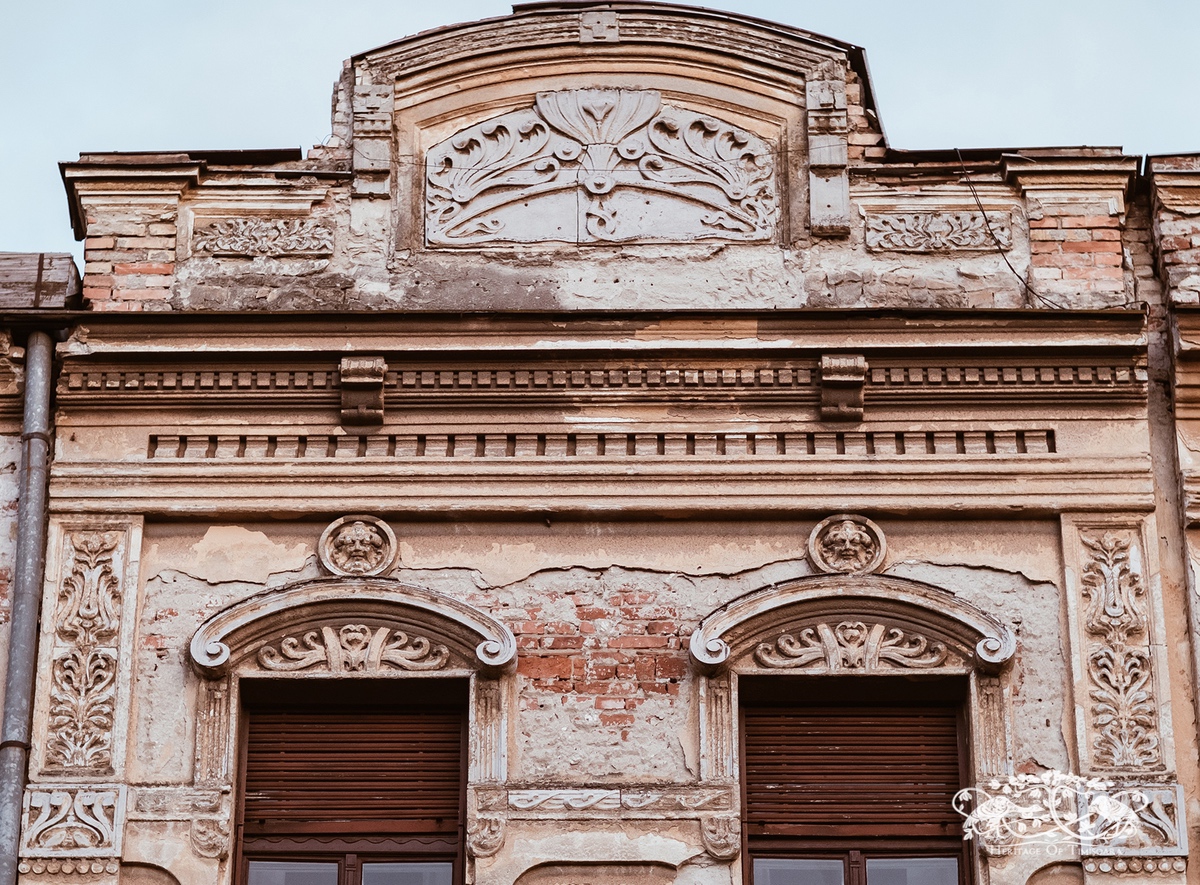
A representation of the “germinative” version of the symbol can be found on the Savings Palace in Iosefin, part of a complex heraldic composition: The Green Man is at the top of a shield on which there are three bees (a banking symbol); the shield is decorated with two oversized garlands and held in place by two statues of young boys. The composition (in alt-relief) was a frequent element in the architecture of Martin Gemeinhart who designed the building.
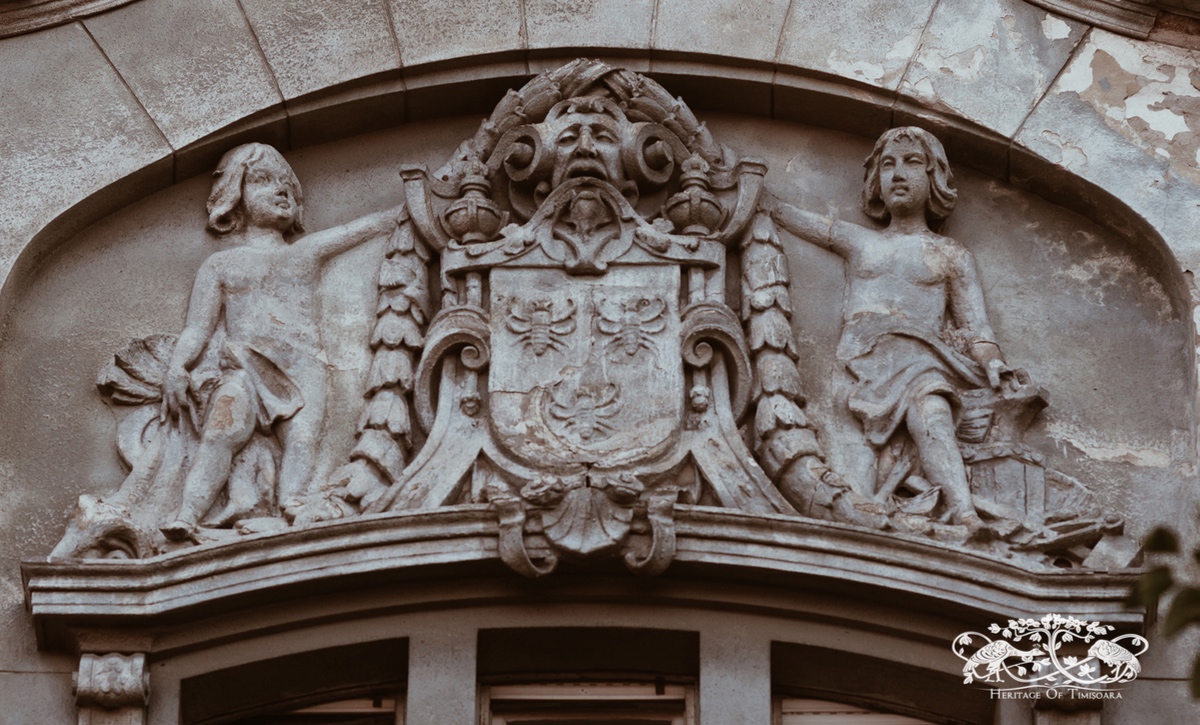
The building designed by the architect Lipót Baumhorn at the junction of Lucian Blaga Street with János Bolyai Steet displays a representation of The Green Man motif that presents characteristics both of the “leafy” type and the “abstract” type, foreshadowing the transition to the next phase. In this case, The Green Man motif decorates the consoles supporting the balconies.
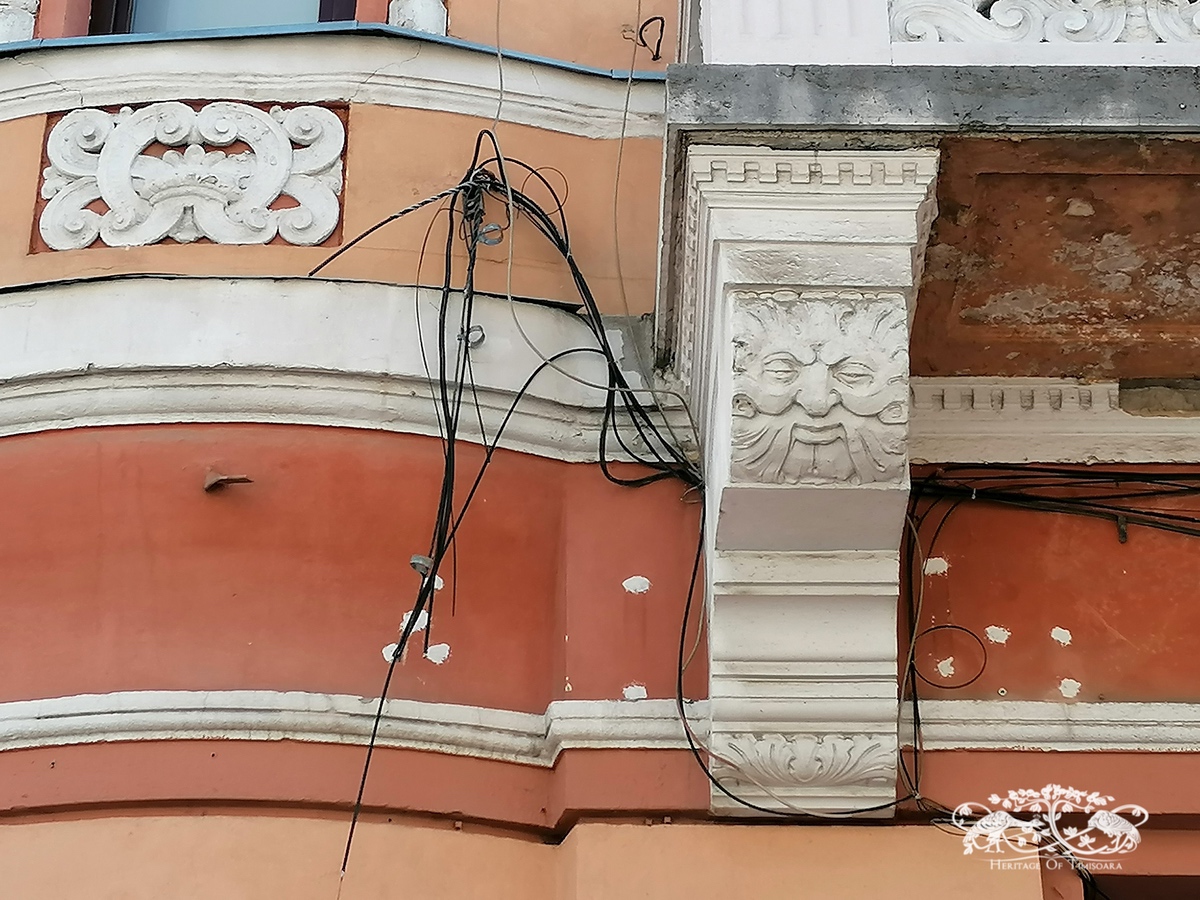
V. The Abstract Type
A third version of The Green Man motif that can be encountered on the facades of the buildings in Timișoara is the “abstract” type. Keeping the theme and the symbol intact, the ornament undergoes plastic transformations though a massive geometrization or though the use of new forms (including zoomorphical ones) typical of the 1900s.
An example of such a treatment of the motif can be seen on the façade of the Palace of the Southern Land Casino (Délvidéki Caszino), a masterpiece of Emil Töry, an architect from Budapest. He clearly interprets the motif in the style of the 1900s, creating mixed dynamic scenes that move away from the classical representations of the motif.
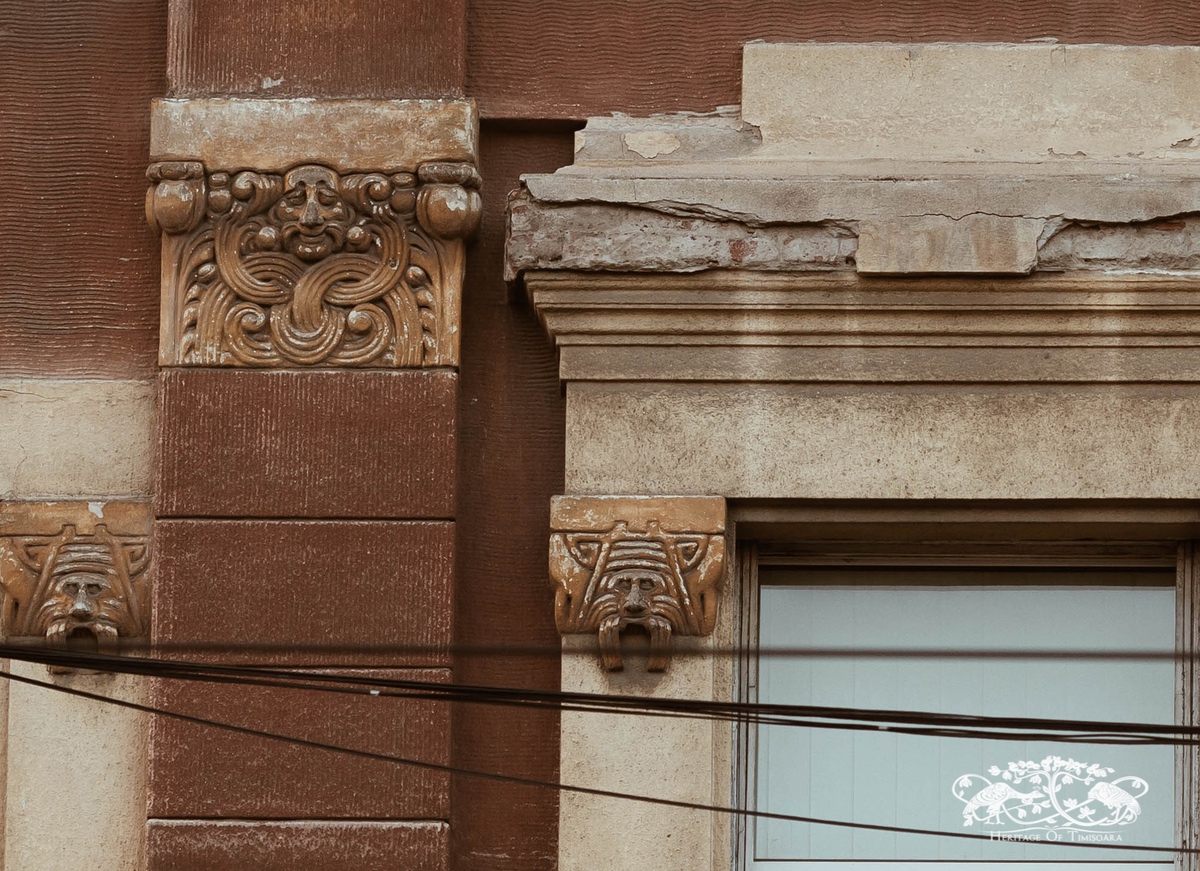
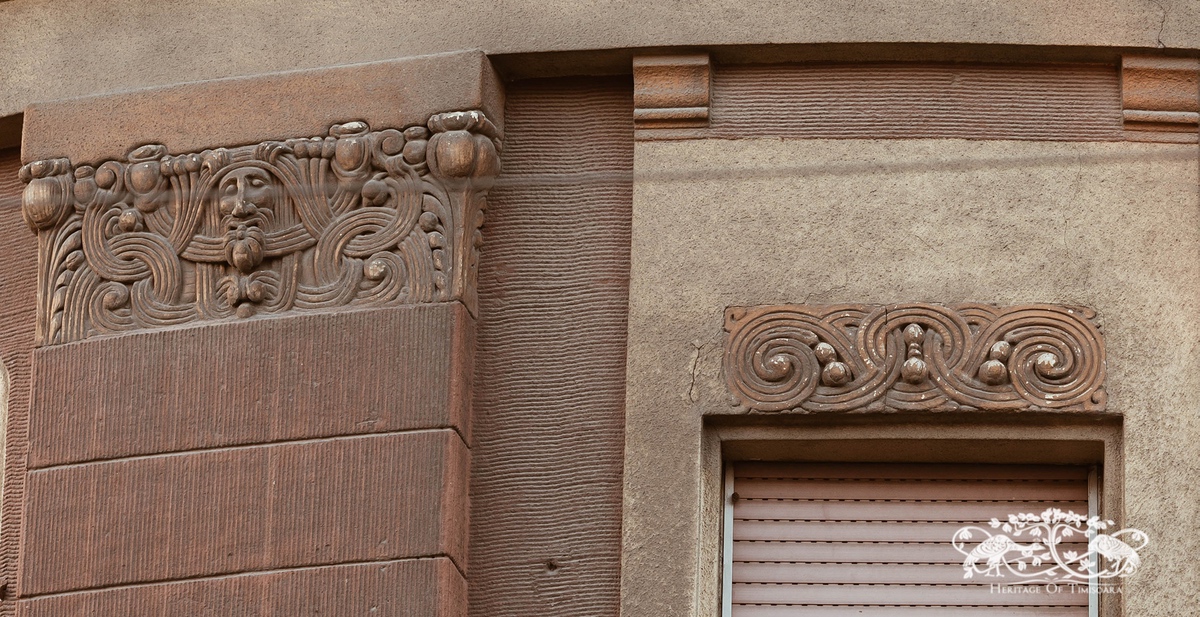
A late composition from the 1912 on a construction designed by the local architect Henrik Telkes displays one of the most abstract apparitions of the motif in the city. On a building whose ornaments are a clear expression of the geometrical phase of Secession, the anthropomorphic decorations are frequently interpreted by specialized literature as depicting mascarons with their tongues sticking out. In fact, they are a geometrical interpretation of The Green Man motif, the “germinative” type.

VI. The Last Appearance Of The Green Man in Timisoara
The façade of the Monastery of the Salvatorian Order, designed by the architect Elemér Makkai, offers us what is perhaps the only example of the employment of the motif on an ecclesiastic building, on decorative panels under the Neo-Gothic windows that flank the statue of Christ. Of the “germinative” type, the representations acquire a nearly demonic expression, an impression intensified by the antagonistic relationship with the statue. Built in 1926, the ensemble of the monastery is the last appearance of The Green Man in Timișoara.
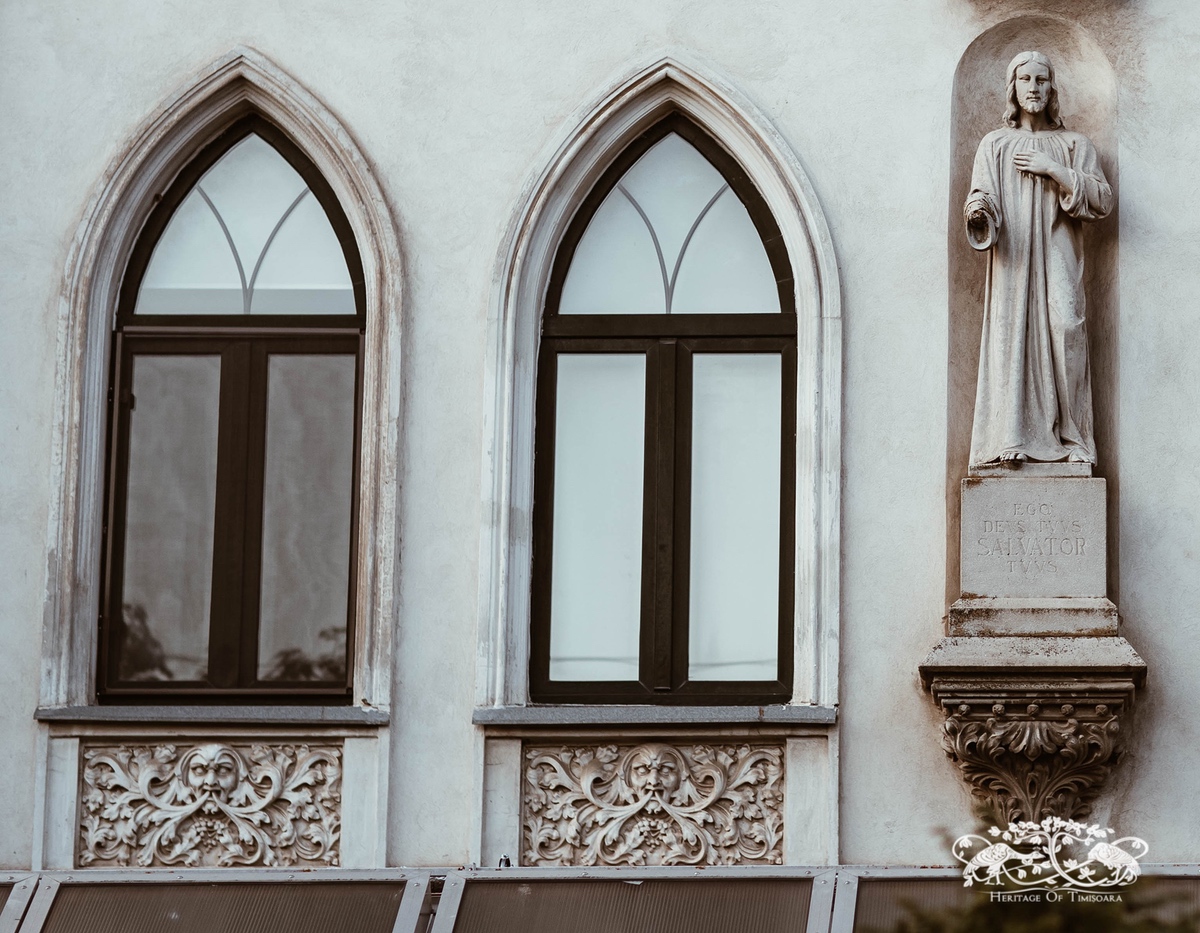
VII. A Local Classification
Based on everything presented above, we propose the following classification of The Green Man motif in the architecture of Timișoara according to its three representations**:
a. The “leafy” version – the motif displays transformations of a vegetal type, often around the cheeks and neck. It is often presented surrounded by luxuriant vegetation;
b. The “germinative” version – the motif is depicted as vegetal spring, as the mouth of the Green Man germinated stems, stalks or vegetal gardlands;
c. The “abstract” version – the motif undergoes plastic transformations, taking on different forms, including zoomorphic ones, but keeping the symbolic dimension unaltered.
From a temporal point of view, we can identify four stages of the symbol on the local scene:
I. The Baroque period – the motif displays obvious aesthetic and expressive qualities without taking on a symbolic function; it also has a significant compositional relevance;
II. The end of the 19th century – the motif has a subordinated role in the hierarchy of the building; no symbolic significance;
III. The 1900s – the motif increases in importance and acquires again a compositional relevance; the symbolic dimension of understood and accounted for;
IV. The abstract period – the motif undergoes plastic transformations, but keeps its symbolic dimension; elaborate geometrical compositions.
VIII. Epilogue
This article represents an introduction into the motif of the Green Man as it appears in the architecture of Timișoara. Without claiming to have carried out an exhaustive study on the topic, we are content to complete a first study and presentation of the motif. Little mentioned in speciality studies in general, the theme of The Green Man displays promising perspectives for future research.
* The syntagma “style of the 1900s” refers to the totality of styles that emerged and became popular around the 1900s, with their typical national influences: Art Nouveau, Jugendstil, Secession, Modernista, Liberty etc.).
** Personal classification based on personal research and an empirical knowledge of the city.
